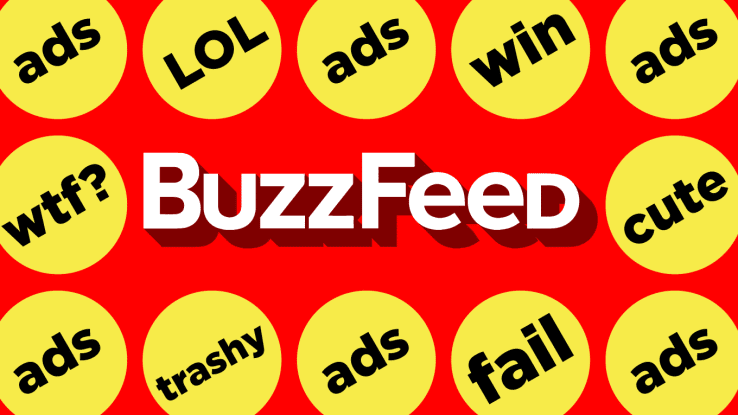Many publishers from almost all industries, the web over, are in awe of and rightly very impressed by the online viral content pioneer and well-oiled meme machine that is Buzzfeed. In less than ten years the site has rapidly ascended to become one of the most visited in the world, which is no easy feat in the über-competitive, cut throat digital media landscape. In this article we’re going to outline three things that you can learn about crafting content that spreads like wildfire across the web from a site that is arguably the best in the world at it.
1. Listicles Are Very Effective
Listicles or list-based articles still work, incredibly well. Some say that Buzzfeed popularised the list-based format and made it mainstream. Whether that’s true or not, one thing’s for certain, they sure do produce a lot of listicles – and for good reason. Buzzsumo analysed 2,420 Buzzfeed articles published between 1st April and 10th April 2016 and found that the listicle format articles were the content type that had the highest average number of shares (just shy of 8k) followed by “how to” format articles which had approximately 6k.
But why do listicles work so damn well, not just for Buzzfeed but for countless other publications across diverse industries? Well, Chris Lake, Director of Content at Econsultancy provides an explanation by stating that it’s largely because “readers get what is on the headline…they’re easy to scan, have digestible content, and can cover all kinds of subjects”.

Image source: Buzzsumo.com – https://buzzsumo.com/blog/buzzfeeds-most-shared-content-format-is-not-what-you-think/
2. Different Article Lengths Work Well For Different Content Topics And Audiences
Buzzfeed is most closely associated with short, text light, image heavy listicles. However, this is far from all that Buzzfeed produces, and in fact, on the whole, Buzzfeed articles cover a broad spectrum of lengths.
As reported in Marketing Land, columnist Kerry Jones recently analysed Buzzfeed’s 100 most shared articles and uncovered some very interesting insights.
She found that, of the 100 most shared Buzzfeed articles, 46 (or 46%) of them were 300 words or less, but conversely, a surprising 15 (or 15%) of them were 1000 words or more!

Image source: Marketingland.com – https://marketingland.com/surprising-lessons-buzzfeeds-popular-content-177572
Even more interestingly, the lengths of Buzzfeed’s more shared articles varied greatly depending on the topic the article was on. For example, the most shared physical health related articles were on average 349 words whereas the most shared current events related articles were on average 920 words.
 Image source: Marketingland.com – https://marketingland.com/surprising-lessons-buzzfeeds-popular-content-177572
Image source: Marketingland.com – https://marketingland.com/surprising-lessons-buzzfeeds-popular-content-177572
So contrary to popular belief, it’s not always only the shortest articles that get the most social shares and the actual topic an article is on has a big influence on the article length that results in the highest number of social shares.
3. Emotional Content Drives Traffic And Social Shares
We analysed the five most shared Buzzfeed articles over the last 6 months (according to Buzzsumo data) using Toneapi and found that on average they had an “emotional coverage” (i.e. the percentage of the content with emotional language) of 21.4%, with a surprising concentration toward “low” intensity emotions (i.e. acceptance, annoyance, apprehension, boredom, distraction, interest, pensiveness, serenity).
This is all shown in the data table below. Based on the data we’ve collected and the analysis we have done on it, it would be reasonable to conclude that emotional content drives the most social shares and thus likely the most traffic for Buzzfeed.
| Article Title | Facebook Engagement (millions) | Twitter Shares (millions) | Total Shares (millions) |
Content Score (Tone measured on scale from -100 to 100) |
Emotional coverage (percentage of content with emotional language)
|
Emotion Intensity of Content (high, medium, low) |
| Here’s The Powerful Letter The Stanford Victim Read To Her Attacker | 1.7m | 52.3k | 1.8m | 0 | 22% | High: 21% Medium: 11% Low: 68% |
| 28 Pictures That Will Make Retail Workers Laugh Harder Than They Should | 264.7k | 318 | 288.8k | 14 | 22% | High: 30% Medium: 17% Low: 53% |
| 28 Pictures That Will Make Teachers Laugh Harder Than They Should | 271.6k | 488 | 278.1k | 29 | 22% | High:24% Medium: 8% Low: 67% |
| 21 Wine Slushies To Give You Life This Summer | 242k | 395 | 252.5k | 2 | 23% | High: 12% Medium: 5% Low: 83% |
| 13 Children’s Books That Encourage Kindness Towards Others | 238.4k | 1.1k | 245.7k | 42 | 18% | High: 26% Medium: 8% Low: 67% |
So those are some of the key content lessons we feel are worth learning from the viral juggernaut. It goes without saying, but it would make little to no sense to just copy all the techniques mentioned above blindly as your company/blog is likely drastically different to Buzzfeed. A more effective method would be to take the techniques that you feel can be applied to, and are relevant to, your content strategy and run small, measured tests to observe the results and go from there.




